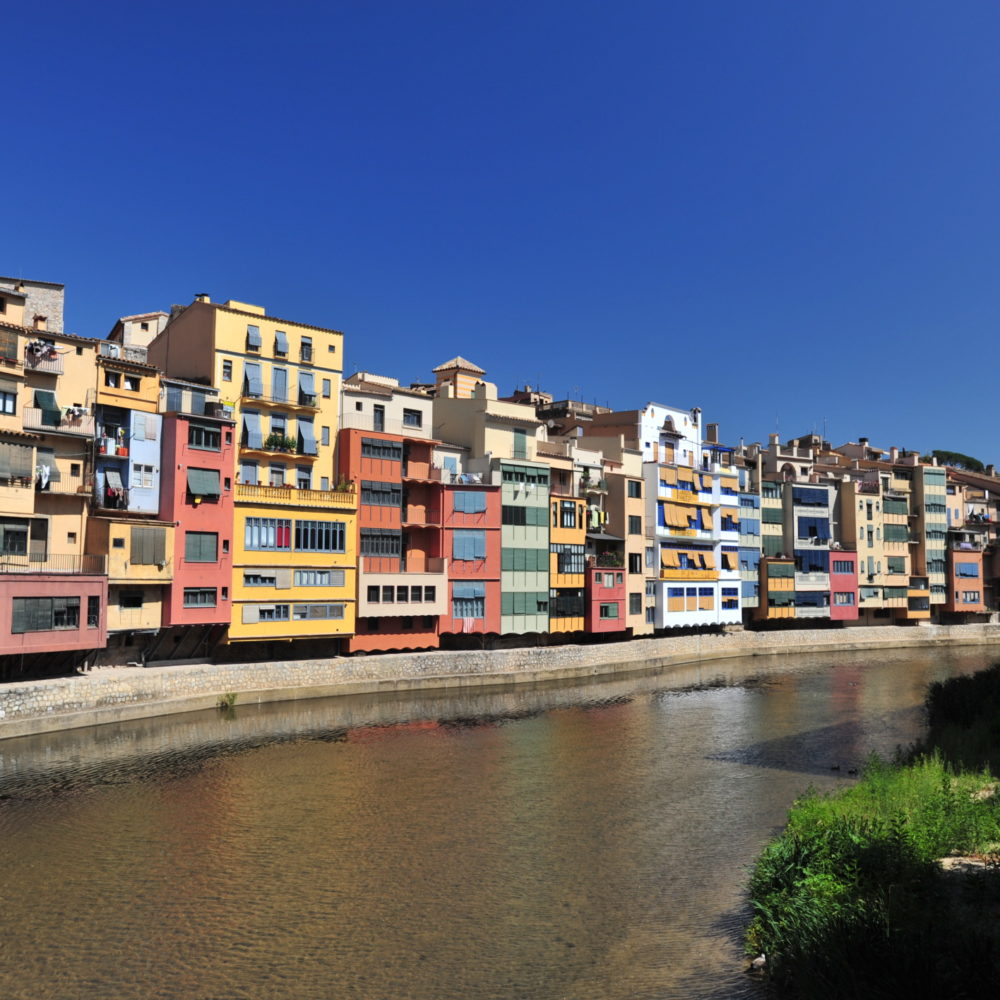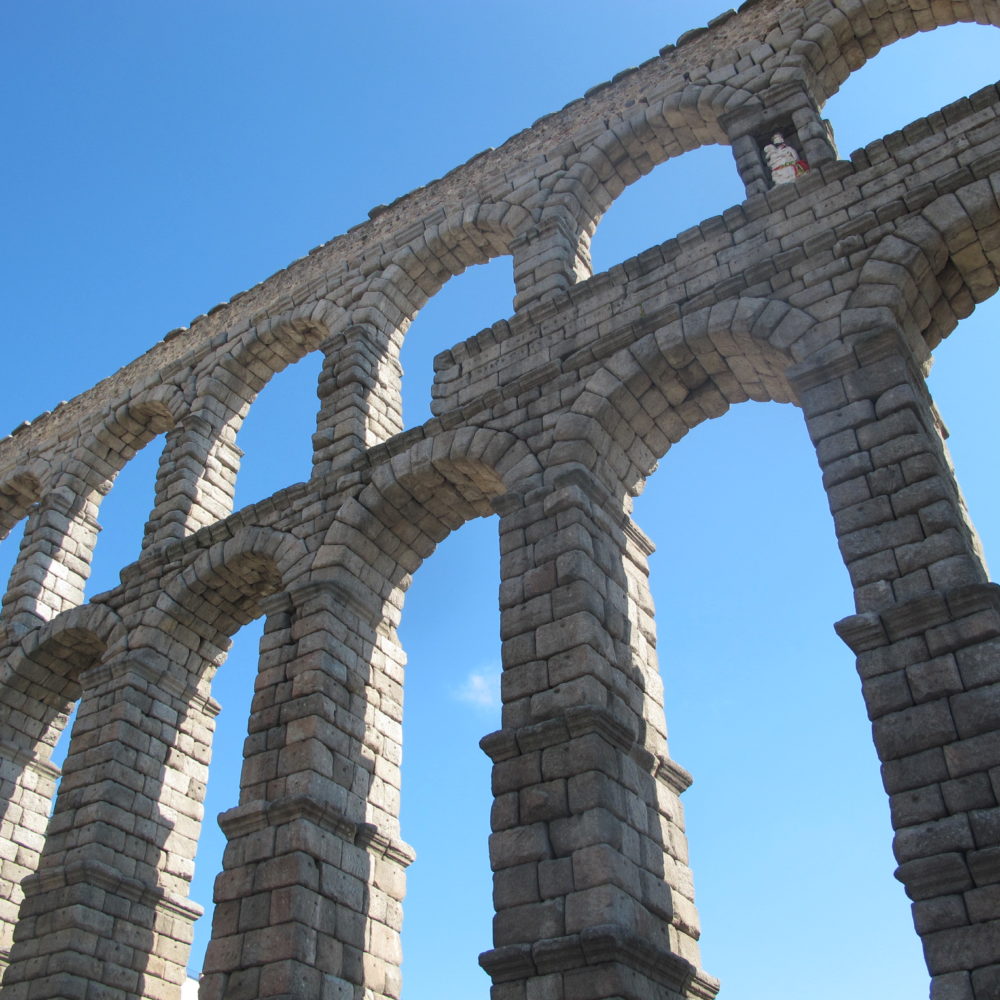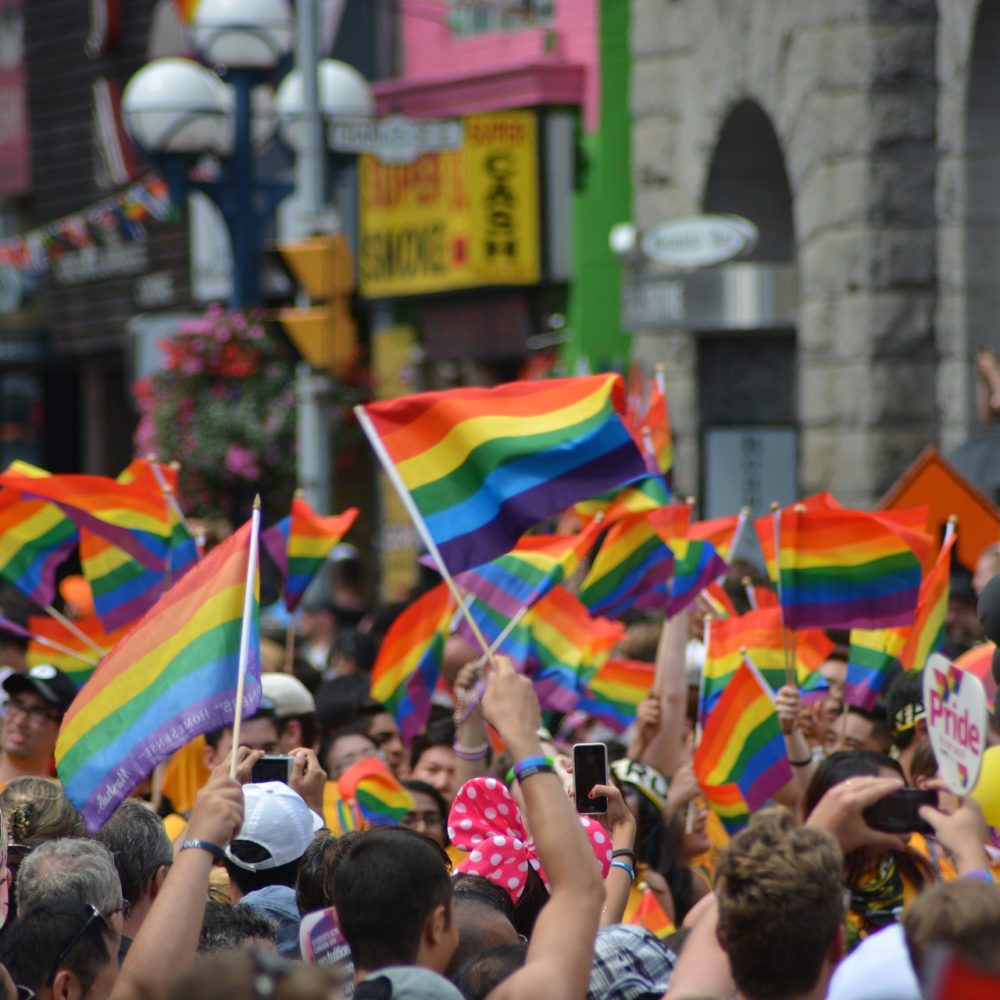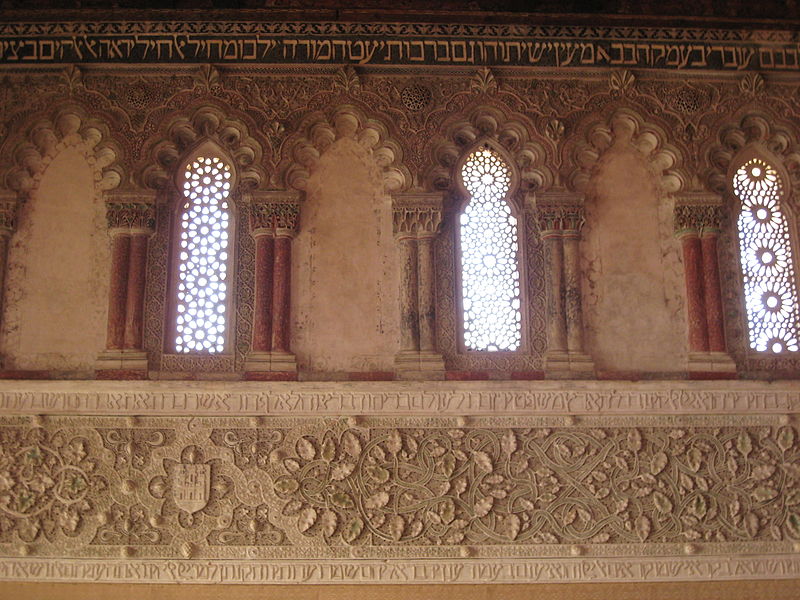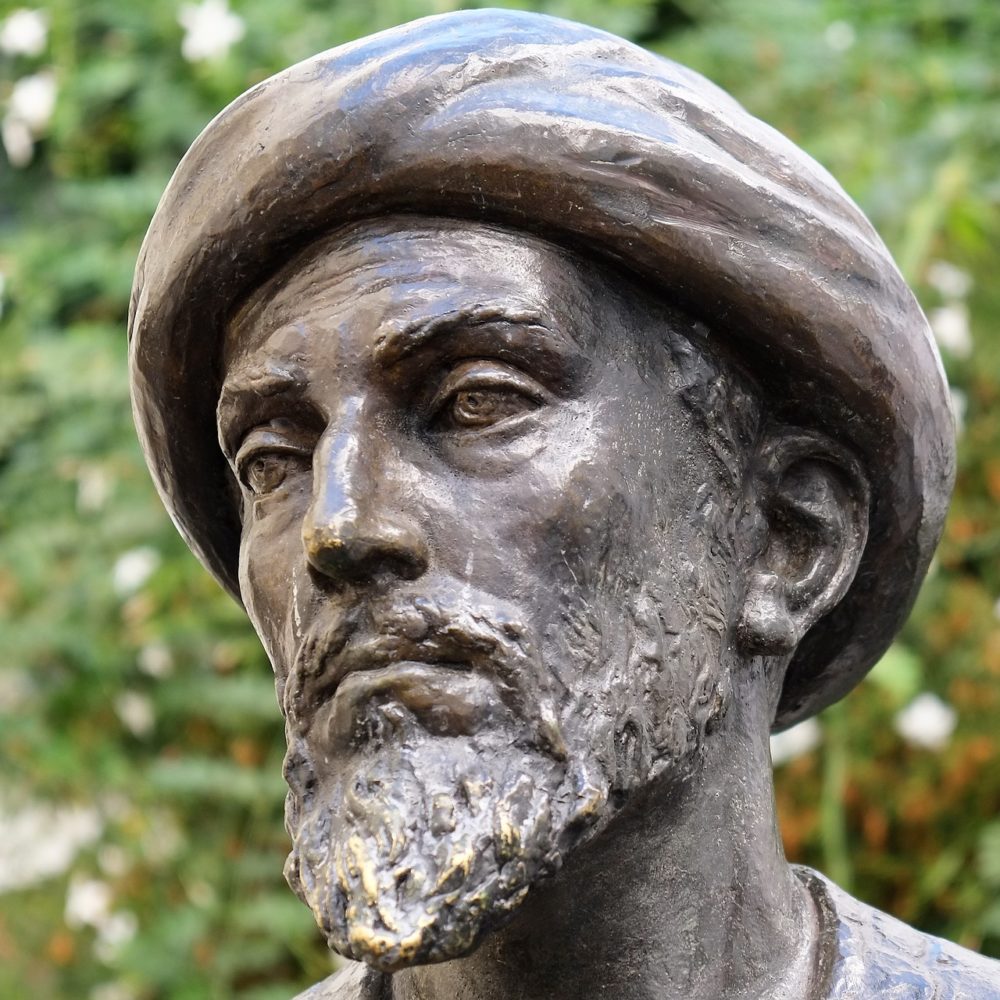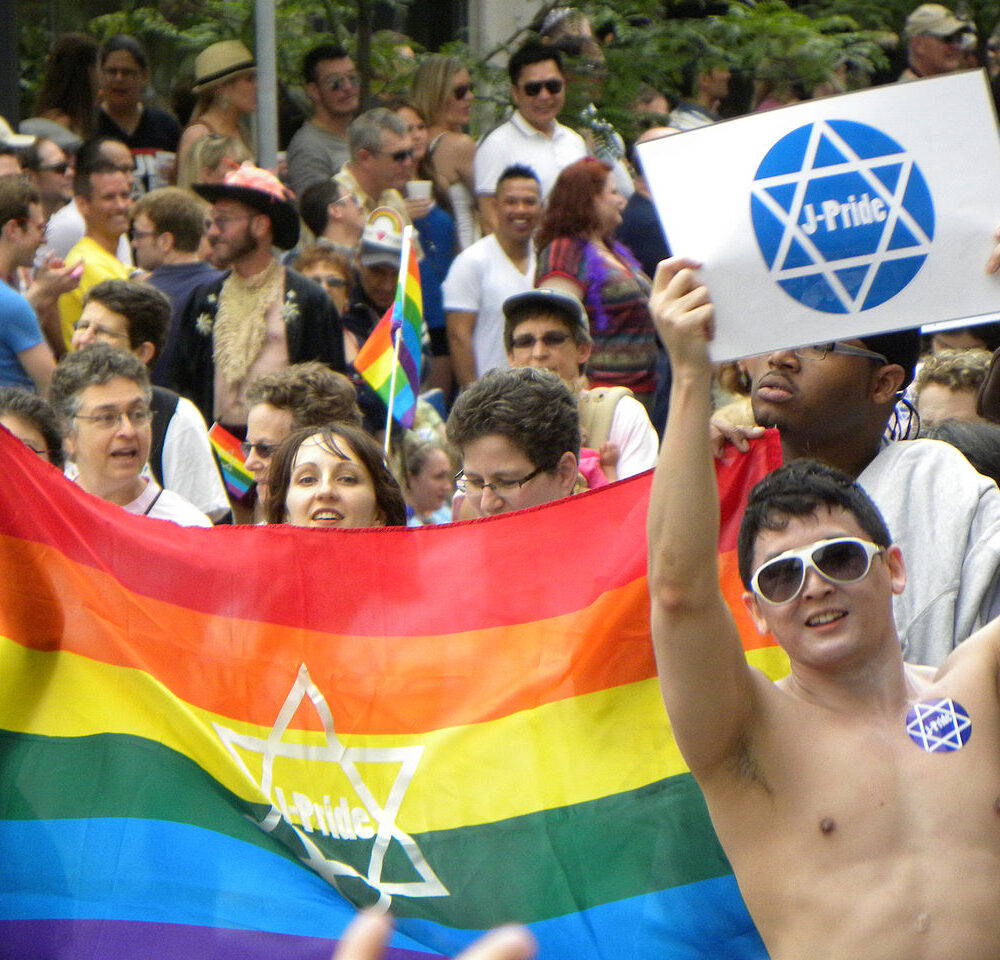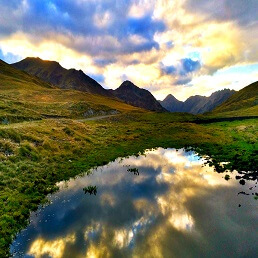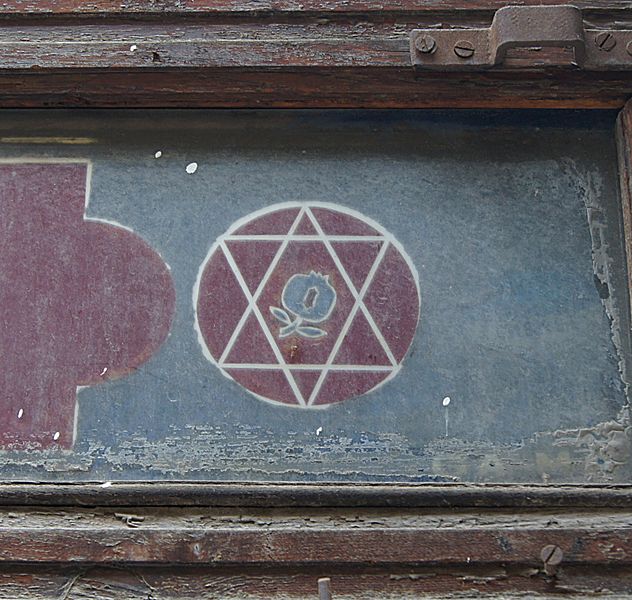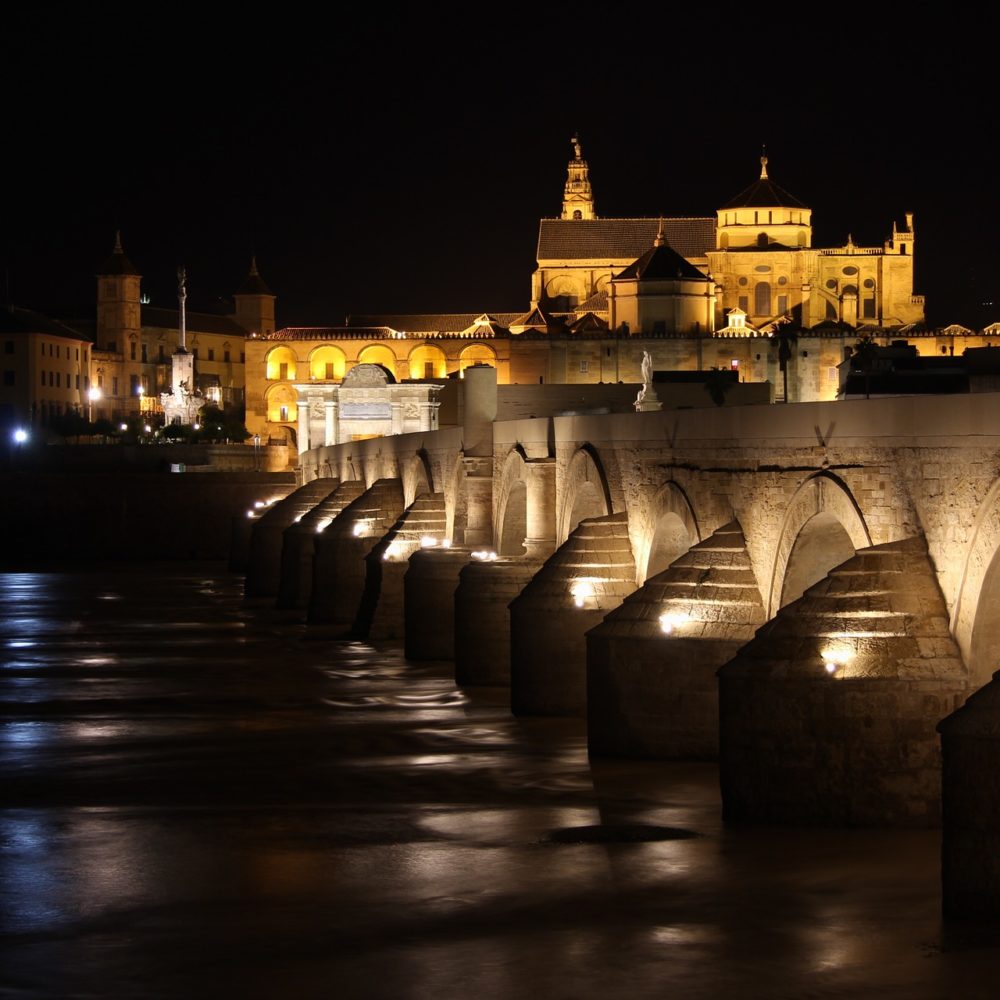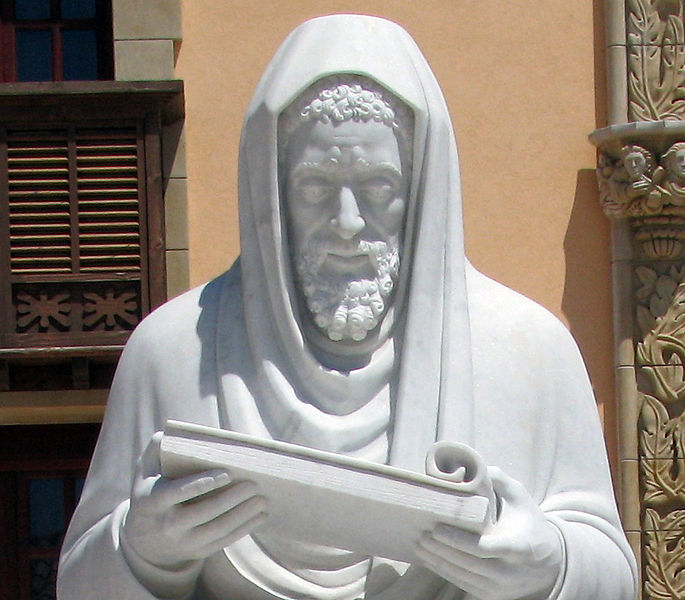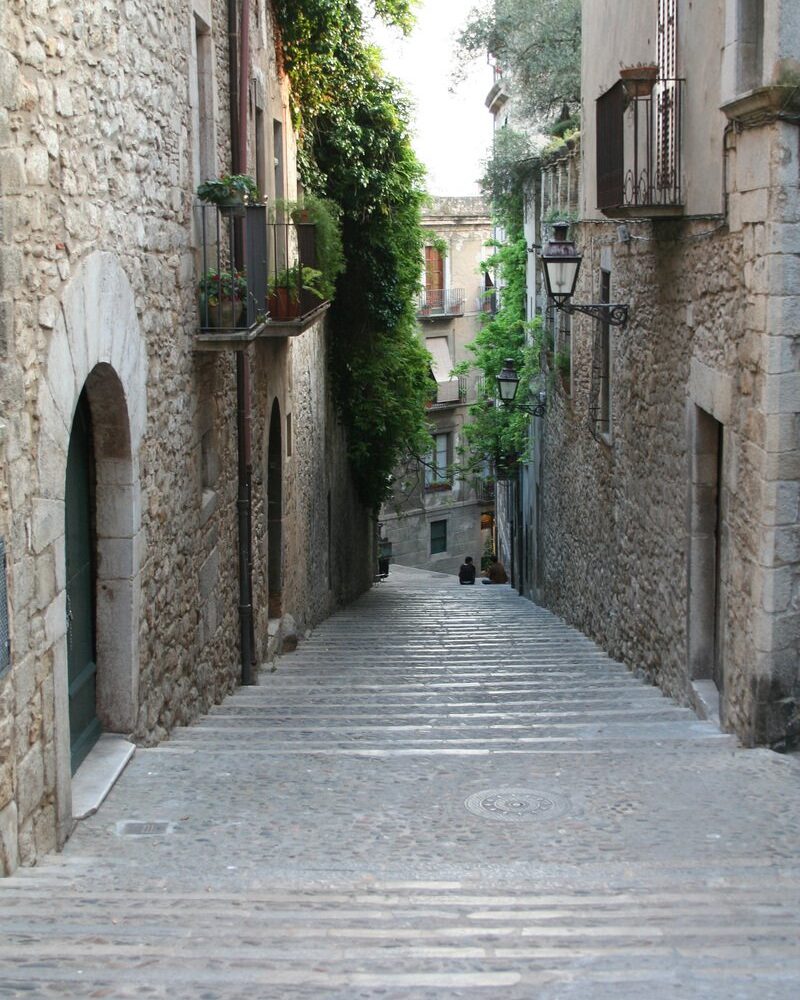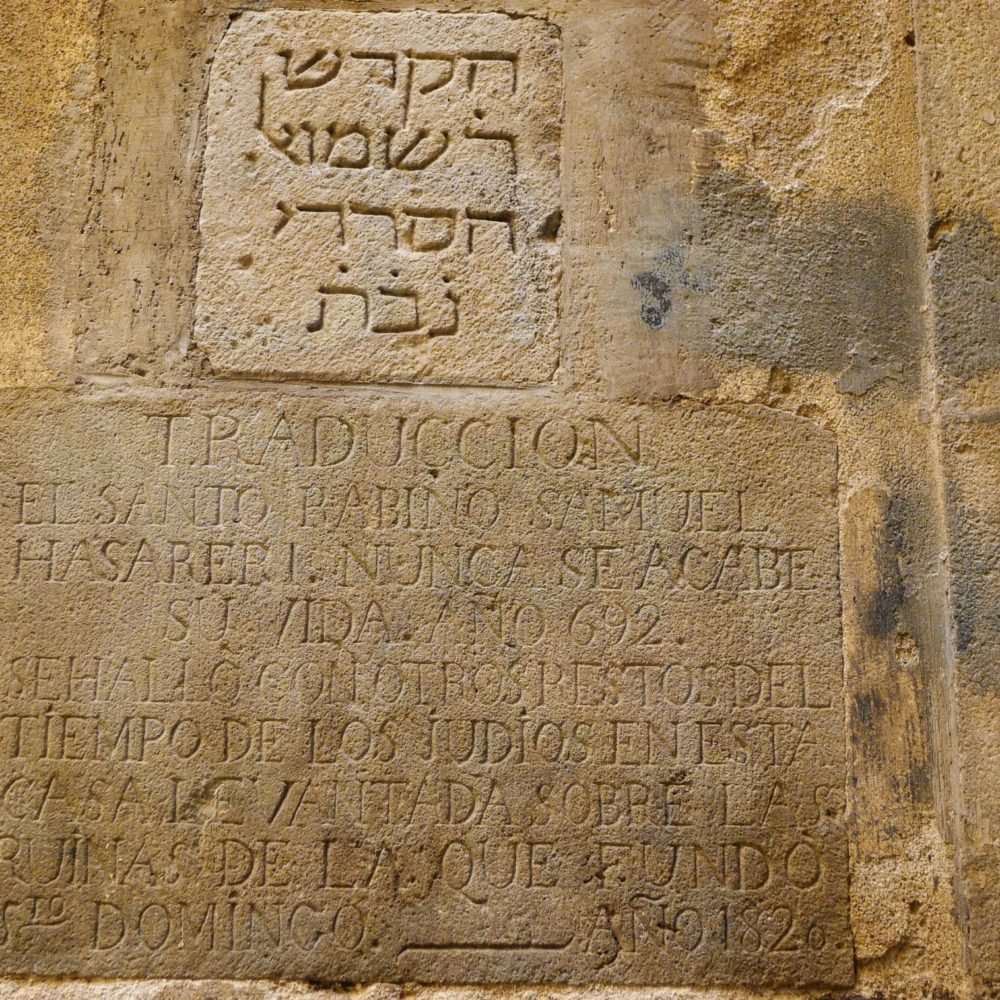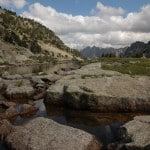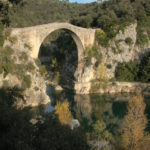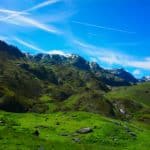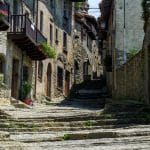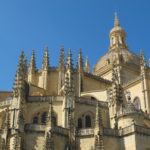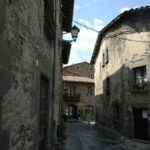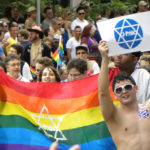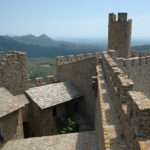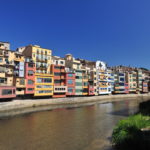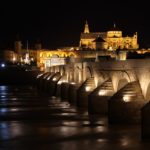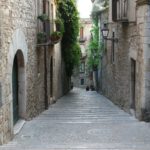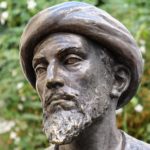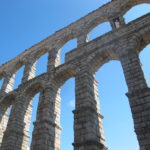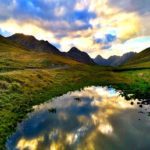A Journey in the footsteps of Spanish Jewry
Integrating tours into beautiful and special routes
Combining medieval Jewish history with contemporary gay culture
Places of interest: Barcelona, Girona, Granada, Malaga, Gibraltar, Sitges
This singular trip will take us back in time, into the very heart of Spanish history and culture, to sites and places few tourists reach. The excursion will combine various activities and visits especially designed to follow the story of the Jews of Spain, those who were expelled and those who stayed behind in secret, hiding. The emphasis will be on the experience, culture and nature rather than on the driving, though the drives each day will include beautiful, breathtaking scenery.
Furthermore, this unique tour was specially designed for the gay community, with its last 2 days dedicated to one of Europe´s most renowned gay festivals.
The Jewish Community of Spain was one of the most important in history. It established itself in Spain under the rule of Islam and continued later under the Christian Monarchy, right up to the time of the expulsion in 1492. Its splendor was at its highest between the 9th and 13th centuries, a period known as The Golden Age. This was a period of economic and cultural flourishing during which the country was the world center of culture and religion for the Jews the world around.
The Jews of Spain developed their own characteristics which included their own form of prayer. The Sephardic version and the dominant religious rulings that began during the 10th century, in the time of Rabbi Hananel, carrying on through time of the Sages of the Golden Age and Rabbi Joseph Karo, have continued to influence the other communities of the diaspora enormously to this days.
When it comes to the LGBT community, Spain has long been recognised as one of the most culturally liberal and LGBT-friendly countries in the world and LGBT culture has had a significant role in Spanish literature, music, cinema and other forms of entertainment as well as social issues and politics. Public opinion on homosexuality is overwhelmingly positive, with more than 88 percent of Spanish citizens accept homosexuality, making it one of the most LGBT-friendly countires in Europe.
Day 1 - Barcelona
Oh, Barcelona, Barcelona…it is not in vain that the
The capital of Catalunya, the city that lies between the mountain and the sea has become a destination much in demand, attracting endless tourists from all over the world.
On this tour, we will get to know the main points of interest in the city, and also receive good tips about food, shopping, and entertainment.
We will start out from an observation point on the Montjuic (the mountain of the Jews), the site where the Olympic Games took place in 1992. From there we will continue down towards the port, to the Paseo Colon (known to us as Columbus) and from there on to the Eixample – an expansion of Barcelona. On the Paseo de Gracia, one of the more exclusive boulevards of Barcelona, we will see the famous buildings designed by Antonio Gaudi – Casa Mila and Casa Batllo. We will also visit the Casa Amatller designed by Puig I Cadafalch. A short break at a café and on to a site that has become one of the symbols of Barcelona, the Sagrada Familia Church – the final life work of Gaudi, who died without seeing it completed. We will end the tour on foot, wandering along the narrow and very lively streets of the Gothic Quarter, paying special attention to the old Jewish quarter. We will see the Cathedral, the Municipal Square, the Ramblas Avenue, the famous Boqueria Market and more. We will absorb the local atmosphere, attempting to stray from the route on occasion in order to observe quaint though less visited corners of Barcelona.
Day 2 - Girona - Besalu - Dali Museum
Girona is the largest city in the north-east of Catalunya and is a treasure trove of museums, galleries and Gothic churches scattered all over the narrow cobbled streets and along the ancient walls. The Onyar River, which separates the historic old city center to the east from the modern commercial center to the west reflects the colorful Modernista buildings.
The city has been inhabited since before the Roman period, and over the centuries was conquered by a variety of armies. During the 12th century, the Jewish population there flourished. The most important Kabbalah center in Europe was there, and the greatest Rabbi of the period, the Ramban, was the chief Rabbi of the city and of the whole of Catalunya. We will visit the ghetto which has been preserved and walk along the streets and alleys where the Ramban used to walk. We will also visit the Jewish cemetery which demonstrates what the Jewish community used to be.
The mountain to the north of the city is the mountain of the Jews and the cemetery is situated there.
The walls surrounding the city were built during the time of the French rule and it is possible, even recommended, to walk on them. The Cathedral and the Arab Baths can be visited.
Besalu– The town of Besalu is known for its beauty and for its Roman bridge from the 10th century. The bridge was necessary in order to join the town with the rest of the country.
It is interesting to observe that in Besalu too there are remnants of the Jewish life that once flourished in the area. The Mikve (ritual bath) that was discovered during an archeological dig is probably one of the earliest in Europe and is attributed to the 12th century. This is the only Mikve discovered on the Iberian Peninsula.
The Dali Museum – The artist most identified with Catalunya, Salvador Dali, the man and the phenomenon was born in Figueras in 1904. During the last years of his life, he built a museum containing a variety of his works and gave it the name of “Theatre Museum Gala Salvador Dali”, hinting at his highly theatrical personality and his craving for publicity and also to the very central role played by Gala, his wife and inspiration.
“How can my enemies, friends and the general public be expected to understand the figures that rise from me and which I reproduce in my paintings when even I myself, who created them, do not understand them” he used to say in his usual ironic style.
Lodging in Barcelona
Day 3 - Barcelona - Madrid
We will begin our morning with a tour of one of the most famous, absolute treasures left by Gaudi, the Guell Park, overlooking Barcelona. From there we will make our way to the railway station for the fast train to Madrid.
Madrid – the Capital of Spain and the seat of government, home of the King, the political and cultural heart of Spain.
Although the infrastructure of the city is modern, the authorities had the wisdom to retain the atmosphere and appearance of the streets and the various old neighborhoods. We will wander along some of the points of interest including the
The royal palace, the royal theatre, and the opera house as well as the Retiro Park and the national library. We will of course not forget the Porto del Sol and the famous Plaza Espana.
Lodging in Madrid
*It is possible to drive to Madrid but that would take a whole day as opposed to three hours by train
Day 4 - Toledo
We will begin the day driving to Toledo which used to be the Capital of Spain before Madrid took its pace. Toledo was often referred to as” Jerusalem of Spain” owing to the large and prosperous Jewish community living there before the expulsion from Spain.
We will start the tour entering the old city walls and wandering along the narrow ancient lanes and alleys until we reach the Alcazar fortress which used to be the home of the kings of Castile. From there we will begin our descent to the old Jewish quarter where we will find the Jewish museum and the old Synagogue of Santa Maria la Blanca which despite its Christian name, used to serve as a synagogue, and Jewish exhibits are displayed on site. To end the tour, before returning to Madrid, we will enjoy a good coffee near the home of the famous painter, El Greco.
Day 5 - Segovia - El Escorial - Vall de Los Caidos
Segovia lies on the plains of Castile, close to Valladolid and not far from Madrid. UNESCO declared the old city a World Heritage Site and a plethora of buildings, both religious and secular are be found there. Our tour will begin in the Jewish quarter where a large number of buildings remain but the most important Jewish site here is the cemetery.
The aqueduct in Segovia is particularly beautiful. Built in the 1st century by the Romans, it continues to supply the town with drinking water and is situated in the central city square. The Cathedral in Segovia, known as the Lady of Cathedrals, is the last one to be built in Spain and is considered a masterpiece of Basque – Castilian – Gothic architecture.
Now we will go on to the Escorial which is one of the most impressive buildings in Spain. It is a palace built by Philip II at the end of the 16th century and was declared a World Heritage Site by UNESCO in 1984. The museum in the palace contains an excellent collection of art, royal apartments used by the Habsburgs and the Bourbons, an elegant Basilica and a library of manuscripts. No less important is the majestic pantheon where all the kings of Spain since Carlos I were buried. The construction of this impressive pantheon was completed in the middle of the 17th century.
Time permitting, we will stop at the Valley of the Fallen which is a memorial site for the victims of the Spanish civil war and was built by political prisoners tens of whom died during its construction, particularly in the course of quarrying the longest Basilica in the world, excavated into the side of the mountain.
The site made headlines recently when the Spanish government declared it would move the remains of Franco.
Lodging in Madrid
Day 6 - La Mancha - Cordóva - Seville
We will start out towards Seville and on our way will come to one of the most famous spots in Spain, La Mancha, place of origin of Don Quixote.
La Mancha – the third largest autonomy in Spain size-wise, but only 9th in the size of the population. The region is known for its many windmills and for its enchanting parks, joined lakes and singular caves.
(Visiting one of the wineries in the region is a possibility)
Next, we will come to Cordóva – this city, built by the Romans in the 2nd century, is one of the most ancient in Andalusia as well as one of the most important. Under the Moslem rule, Cordóva became the largest city in Europe and the center of art and studies of Islam. Cordóva acted also as the Capital of the ruling Caliphate and was famous for its riches, its many mosques and its unprecedented size at that time.
The Jewish community flourished in Cordóva over a long period, up to the time of the warring ruling peoples which ended in the Reconquista – the re-conquest by the Christians, after which Jewish life in the place ended. During our tour, we will see the famous Cathedral which was first constructed as a pagan place of worship in the time of the Romans and has remained an active place of worship ever since.
Among the most famous Jews to come from Cordóva is the Rambam after whom the synagogue in the Juderia (Jewish quarter) is named.
Lodging in Seville.
Day 7 - Seville
Seville – the Capital of the Autonomous Community of Andalusia is the fourth largest city in Spain and the motto of the city is “She (Seville) never left me”. The city is a breathtaking mixture of modern building side by side with ancient buildings dating to 1502 – for example the local university.
Our tour of the city will take us to like the Giralda Tower, the bell tower of the cathedral built in the Gothic and Baroque styles, the Alcazar Palace, the Indian Islands Archives which describe the Spanish conquest of America and the Philippines, the Plaza de Espana and of course the Metropol Parasol, a delightful modern example of a multi-functional building which serves as market, archaeological museum and promenade, with huge sunshades giving shade to the square.
Lodging in Seville
Day 8 - Ronda - Gibraltar - Malaga
The proximity to Africa makes the heat in Andalusia quite unbearable at times and the inhabitants have taken to painting their houses in cool colors that do not attract the sun. We will tour the famous white villages scattered among the mountain ranges and the valleys.
The village of Ronda is the central focus for rainfall in the whole of the Iberian Peninsula and it is surrounded by a great deal of greenery which blends into the white and the desert brown, creating one of the beauty spots of Spain. Not in vain was Ronda crowned the most famous village (actually a town) in the district, attracting commerce while managing to retain its romantic peaceful atmosphere. We will pass by the famous Ronda bulls’ square. The tradition originates in this town and the bulls’ museum can be visited. Tourists from all over the world flock to see it as well as the school for matadors.
Leaving Ronda, we will head for the southernmost point in the Iberian Peninsula, where the official language is English –
Gibraltar – this small territory, seven kilometers square, has been ruled by the United Kingdom since 1713 and up to the present day. Within this tiny territory, there is a small but very active, charming and influential Jewish community. The community is small in numbers but holds much building among them several Kosher supermarkets. There are here more synagogues than there are in the whole of Barcelona.
We will walk on the rock of Gibraltar and watch the monkeys that roam freely there. We will also look towards Morocco from the point closest to it in Europe. We will then cross back into Spain through the border town of La Linea de la Concepcion, and on reaching Malaga we will make a reconnaissance tour.
Lodging in Malaga
Day 9 - Granada - Costa del Sol - Malaga
In the morning we will set out for one of the touristic pearls of Andalusia, namely Granada. This city was already settled in the 7th century BC and passed through many hands until the year 713 when the African Moslem tribes conquered and took over for 800 years.
We will begin our tour with a visit to the oldest quarter of the city, Albayzin with its very narrow cobbled streets slightly reminiscent of the old city of Jerusalem. We will move on to the Alhambra palaces, home to the kings, and then to the Cathedral where the Catholic King Ferdinand and Queen Isabella are buried. From there we will go on to one of the most famous and sunniest stretches of coast, the Costa del Sol.
Costa del Sol – the “sunny coast” is a phrase coined during the twenties of the 19th century by local tourist promoters who began to advertise their hotels all over the world. This coastal strip attracts about 35% of the total number of tourists to the area, owing to the pleasant weather averaging 19 degrees and the more than 300 sunny days a year. This has become one of the most expensive tourist attractions in Europe.
We will continue our tour in Malaga. We will wander around the Plaza de la Constitucion which is surrounded by cafes and boutiques. We will walk along the narrow streets which branch off the main street in order to get the feeling of the history surrounding us and to admire the singular monuments such as the Cathedral of Malaga which has yet to be completed and probably never will be. We will go next to the Alcazbra fortress, a Moorish castle built in the 11th century, surrounded by gardens, statues, and fountains. We will enjoy a stunning sunset as we admire the statue of Shlomo Ibn Gvirol.
Day 10 - Malaga - Barcelona
We will begin our last day in Malaga with a visit to the museum dedicated to this town’s most famous son, Pablo Picasso. After that, we will get onto the fast train to Barcelona.
Time permitting before your flight, we will wander around enjoying Barcelona a little longer.
Days 11-12 - Festival Days
These 2 days will be dedicated to one of the following festivals, depending on the dates chosen:
Sitges Pride (01-10/06/2019):
Sitges Pride promises to be bigger than ever this year, as it’s the event’s 10th birthday party! Celebrations kick off on Saturday, June 1st and will last ten days of non-stop action. As Sitges is one of Europe’s most popular gay destinations, Pride is guaranteed to draw a diverse, lively and very shirtless crowd.
Pool parties, boat parties, beach parties, not to mention all of the after parties, all await this year´s participants in one of Europe´s most well-renowned gay events.
Circuit Festival Barcelona (08-18/08/2019):
In 2008, a concept was created that changed the scene forever. For the first time in history, the best parties, promoters and international artists gathered in Barcelona to celebrate a week of clubbing and holidays that turned the city into what we know it for today: the international gay summer capital.
Circuit Festival means discovering the best music on earth, meeting with friends from all over the world and making new ones, celebrating cultural and affective diversity, discovering a city that has an endless leisure and cultural offer, visiting beautiful beaches and incredible places. Above all, Circuit Festival is the place where your dreams can come true.
11 amazing, 1 amazing city, 16 mind-blowing parties, 40 world class DJs and thousands of people from all over the world.
- The route may be altered due to weather, condition of roads, decision by authorities or decision by the guide on site.
- This route is a suggestion. The final route will be agreed upon with the client and according to the seasonal possibilities.
This singular trip will take us back in time, into the very heart of Spanish history and culture, to sites and places few tourists reach. The excursion will combine various activities and visits especially designed to follow the story of the Jews of Spain, those who were expelled and those who stayed behind in secret, hiding. The emphasis will be on the experience, culture and nature rather than on the driving, though the drives each day will include beautiful, breathtaking scenery.
Furthermore, this unique tour was specially designed for the gay community, with its last 2 days dedicated to one of Europe´s most renowned gay festivals.
The Jewish Community of Spain was one of the most important in history. It established itself in Spain under the rule of Islam and continued later under the Christian Monarchy, right up to the time of the expulsion in 1492. Its splendor was at its highest between the 9th and 13th centuries, a period known as The Golden Age. This was a period of economic and cultural flourishing during which the country was the world center of culture and religion for the Jews the world around.
The Jews of Spain developed their own characteristics which included their own form of prayer. The Sephardic version and the dominant religious rulings that began during the 10th century, in the time of Rabbi Hananel, carrying on through time of the Sages of the Golden Age and Rabbi Joseph Karo, have continued to influence the other communities of the diaspora enormously to this days.
When it comes to the LGBT community, Spain has long been recognised as one of the most culturally liberal and LGBT-friendly countries in the world and LGBT culture has had a significant role in Spanish literature, music, cinema and other forms of entertainment as well as social issues and politics. Public opinion on homosexuality is overwhelmingly positive, with more than 88 percent of Spanish citizens accept homosexuality, making it one of the most LGBT-friendly countires in Europe.
Day 1 - Barcelona
Oh, Barcelona, Barcelona…it is not in vain that the
The capital of Catalunya, the city that lies between the mountain and the sea has become a destination much in demand, attracting endless tourists from all over the world.
On this tour, we will get to know the main points of interest in the city, and also receive good tips about food, shopping, and entertainment.
We will start out from an observation point on the Montjuic (the mountain of the Jews), the site where the Olympic Games took place in 1992. From there we will continue down towards the port, to the Paseo Colon (known to us as Columbus) and from there on to the Eixample – an expansion of Barcelona. On the Paseo de Gracia, one of the more exclusive boulevards of Barcelona, we will see the famous buildings designed by Antonio Gaudi – Casa Mila and Casa Batllo. We will also visit the Casa Amatller designed by Puig I Cadafalch. A short break at a café and on to a site that has become one of the symbols of Barcelona, the Sagrada Familia Church – the final life work of Gaudi, who died without seeing it completed. We will end the tour on foot, wandering along the narrow and very lively streets of the Gothic Quarter, paying special attention to the old Jewish quarter. We will see the Cathedral, the Municipal Square, the Ramblas Avenue, the famous Boqueria Market and more. We will absorb the local atmosphere, attempting to stray from the route on occasion in order to observe quaint though less visited corners of Barcelona.
Day 2 - Girona - Besalu - Dali Museum
Girona is the largest city in the north-east of Catalunya and is a treasure trove of museums, galleries and Gothic churches scattered all over the narrow cobbled streets and along the ancient walls. The Onyar River, which separates the historic old city center to the east from the modern commercial center to the west reflects the colorful Modernista buildings.
The city has been inhabited since before the Roman period, and over the centuries was conquered by a variety of armies. During the 12th century, the Jewish population there flourished. The most important Kabbalah center in Europe was there, and the greatest Rabbi of the period, the Ramban, was the chief Rabbi of the city and of the whole of Catalunya. We will visit the ghetto which has been preserved and walk along the streets and alleys where the Ramban used to walk. We will also visit the Jewish cemetery which demonstrates what the Jewish community used to be.
The mountain to the north of the city is the mountain of the Jews and the cemetery is situated there.
The walls surrounding the city were built during the time of the French rule and it is possible, even recommended, to walk on them. The Cathedral and the Arab Baths can be visited.
Besalu– The town of Besalu is known for its beauty and for its Roman bridge from the 10th century. The bridge was necessary in order to join the town with the rest of the country.
It is interesting to observe that in Besalu too there are remnants of the Jewish life that once flourished in the area. The Mikve (ritual bath) that was discovered during an archeological dig is probably one of the earliest in Europe and is attributed to the 12th century. This is the only Mikve discovered on the Iberian Peninsula.
The Dali Museum – The artist most identified with Catalunya, Salvador Dali, the man and the phenomenon was born in Figueras in 1904. During the last years of his life, he built a museum containing a variety of his works and gave it the name of “Theatre Museum Gala Salvador Dali”, hinting at his highly theatrical personality and his craving for publicity and also to the very central role played by Gala, his wife and inspiration.
“How can my enemies, friends and the general public be expected to understand the figures that rise from me and which I reproduce in my paintings when even I myself, who created them, do not understand them” he used to say in his usual ironic style.
Lodging in Barcelona
Day 3 - Barcelona - Madrid
We will begin our morning with a tour of one of the most famous, absolute treasures left by Gaudi, the Guell Park, overlooking Barcelona. From there we will make our way to the railway station for the fast train to Madrid.
Madrid – the Capital of Spain and the seat of government, home of the King, the political and cultural heart of Spain.
Although the infrastructure of the city is modern, the authorities had the wisdom to retain the atmosphere and appearance of the streets and the various old neighborhoods. We will wander along some of the points of interest including the
The royal palace, the royal theatre, and the opera house as well as the Retiro Park and the national library. We will of course not forget the Porto del Sol and the famous Plaza Espana.
Lodging in Madrid
*It is possible to drive to Madrid but that would take a whole day as opposed to three hours by train
Day 4 - Toledo
We will begin the day driving to Toledo which used to be the Capital of Spain before Madrid took its pace. Toledo was often referred to as” Jerusalem of Spain” owing to the large and prosperous Jewish community living there before the expulsion from Spain.
We will start the tour entering the old city walls and wandering along the narrow ancient lanes and alleys until we reach the Alcazar fortress which used to be the home of the kings of Castile. From there we will begin our descent to the old Jewish quarter where we will find the Jewish museum and the old Synagogue of Santa Maria la Blanca which despite its Christian name, used to serve as a synagogue, and Jewish exhibits are displayed on site. To end the tour, before returning to Madrid, we will enjoy a good coffee near the home of the famous painter, El Greco.
Day 5 - Segovia - El Escorial - Vall de Los Caidos
Segovia lies on the plains of Castile, close to Valladolid and not far from Madrid. UNESCO declared the old city a World Heritage Site and a plethora of buildings, both religious and secular are be found there. Our tour will begin in the Jewish quarter where a large number of buildings remain but the most important Jewish site here is the cemetery.
The aqueduct in Segovia is particularly beautiful. Built in the 1st century by the Romans, it continues to supply the town with drinking water and is situated in the central city square. The Cathedral in Segovia, known as the Lady of Cathedrals, is the last one to be built in Spain and is considered a masterpiece of Basque – Castilian – Gothic architecture.
Now we will go on to the Escorial which is one of the most impressive buildings in Spain. It is a palace built by Philip II at the end of the 16th century and was declared a World Heritage Site by UNESCO in 1984. The museum in the palace contains an excellent collection of art, royal apartments used by the Habsburgs and the Bourbons, an elegant Basilica and a library of manuscripts. No less important is the majestic pantheon where all the kings of Spain since Carlos I were buried. The construction of this impressive pantheon was completed in the middle of the 17th century.
Time permitting, we will stop at the Valley of the Fallen which is a memorial site for the victims of the Spanish civil war and was built by political prisoners tens of whom died during its construction, particularly in the course of quarrying the longest Basilica in the world, excavated into the side of the mountain.
The site made headlines recently when the Spanish government declared it would move the remains of Franco.
Lodging in Madrid
Day 6 - La Mancha - Cordóva - Seville
We will start out towards Seville and on our way will come to one of the most famous spots in Spain, La Mancha, place of origin of Don Quixote.
La Mancha – the third largest autonomy in Spain size-wise, but only 9th in the size of the population. The region is known for its many windmills and for its enchanting parks, joined lakes and singular caves.
(Visiting one of the wineries in the region is a possibility)
Next, we will come to Cordóva – this city, built by the Romans in the 2nd century, is one of the most ancient in Andalusia as well as one of the most important. Under the Moslem rule, Cordóva became the largest city in Europe and the center of art and studies of Islam. Cordóva acted also as the Capital of the ruling Caliphate and was famous for its riches, its many mosques and its unprecedented size at that time.
The Jewish community flourished in Cordóva over a long period, up to the time of the warring ruling peoples which ended in the Reconquista – the re-conquest by the Christians, after which Jewish life in the place ended. During our tour, we will see the famous Cathedral which was first constructed as a pagan place of worship in the time of the Romans and has remained an active place of worship ever since.
Among the most famous Jews to come from Cordóva is the Rambam after whom the synagogue in the Juderia (Jewish quarter) is named.
Lodging in Seville.
Day 7 - Seville
Seville – the Capital of the Autonomous Community of Andalusia is the fourth largest city in Spain and the motto of the city is “She (Seville) never left me”. The city is a breathtaking mixture of modern building side by side with ancient buildings dating to 1502 – for example the local university.
Our tour of the city will take us to like the Giralda Tower, the bell tower of the cathedral built in the Gothic and Baroque styles, the Alcazar Palace, the Indian Islands Archives which describe the Spanish conquest of America and the Philippines, the Plaza de Espana and of course the Metropol Parasol, a delightful modern example of a multi-functional building which serves as market, archaeological museum and promenade, with huge sunshades giving shade to the square.
Lodging in Seville
Day 8 - Ronda - Gibraltar - Malaga
The proximity to Africa makes the heat in Andalusia quite unbearable at times and the inhabitants have taken to painting their houses in cool colors that do not attract the sun. We will tour the famous white villages scattered among the mountain ranges and the valleys.
The village of Ronda is the central focus for rainfall in the whole of the Iberian Peninsula and it is surrounded by a great deal of greenery which blends into the white and the desert brown, creating one of the beauty spots of Spain. Not in vain was Ronda crowned the most famous village (actually a town) in the district, attracting commerce while managing to retain its romantic peaceful atmosphere. We will pass by the famous Ronda bulls’ square. The tradition originates in this town and the bulls’ museum can be visited. Tourists from all over the world flock to see it as well as the school for matadors.
Leaving Ronda, we will head for the southernmost point in the Iberian Peninsula, where the official language is English –
Gibraltar – this small territory, seven kilometers square, has been ruled by the United Kingdom since 1713 and up to the present day. Within this tiny territory, there is a small but very active, charming and influential Jewish community. The community is small in numbers but holds much building among them several Kosher supermarkets. There are here more synagogues than there are in the whole of Barcelona.
We will walk on the rock of Gibraltar and watch the monkeys that roam freely there. We will also look towards Morocco from the point closest to it in Europe. We will then cross back into Spain through the border town of La Linea de la Concepcion, and on reaching Malaga we will make a reconnaissance tour.
Lodging in Malaga
Day 9 - Granada - Costa del Sol - Malaga
In the morning we will set out for one of the touristic pearls of Andalusia, namely Granada. This city was already settled in the 7th century BC and passed through many hands until the year 713 when the African Moslem tribes conquered and took over for 800 years.
We will begin our tour with a visit to the oldest quarter of the city, Albayzin with its very narrow cobbled streets slightly reminiscent of the old city of Jerusalem. We will move on to the Alhambra palaces, home to the kings, and then to the Cathedral where the Catholic King Ferdinand and Queen Isabella are buried. From there we will go on to one of the most famous and sunniest stretches of coast, the Costa del Sol.
Costa del Sol – the “sunny coast” is a phrase coined during the twenties of the 19th century by local tourist promoters who began to advertise their hotels all over the world. This coastal strip attracts about 35% of the total number of tourists to the area, owing to the pleasant weather averaging 19 degrees and the more than 300 sunny days a year. This has become one of the most expensive tourist attractions in Europe.
We will continue our tour in Malaga. We will wander around the Plaza de la Constitucion which is surrounded by cafes and boutiques. We will walk along the narrow streets which branch off the main street in order to get the feeling of the history surrounding us and to admire the singular monuments such as the Cathedral of Malaga which has yet to be completed and probably never will be. We will go next to the Alcazbra fortress, a Moorish castle built in the 11th century, surrounded by gardens, statues, and fountains. We will enjoy a stunning sunset as we admire the statue of Shlomo Ibn Gvirol.
Day 10 - Malaga - Barcelona
We will begin our last day in Malaga with a visit to the museum dedicated to this town’s most famous son, Pablo Picasso. After that, we will get onto the fast train to Barcelona.
Time permitting before your flight, we will wander around enjoying Barcelona a little longer.
Days 11-12 - Festival Days
These 2 days will be dedicated to one of the following festivals, depending on the dates chosen:
Sitges Pride (01-10/06/2019):
Sitges Pride promises to be bigger than ever this year, as it’s the event’s 10th birthday party! Celebrations kick off on Saturday, June 1st and will last ten days of non-stop action. As Sitges is one of Europe’s most popular gay destinations, Pride is guaranteed to draw a diverse, lively and very shirtless crowd.
Pool parties, boat parties, beach parties, not to mention all of the after parties, all await this year´s participants in one of Europe´s most well-renowned gay events.
Circuit Festival Barcelona (08-18/08/2019):
In 2008, a concept was created that changed the scene forever. For the first time in history, the best parties, promoters and international artists gathered in Barcelona to celebrate a week of clubbing and holidays that turned the city into what we know it for today: the international gay summer capital.
Circuit Festival means discovering the best music on earth, meeting with friends from all over the world and making new ones, celebrating cultural and affective diversity, discovering a city that has an endless leisure and cultural offer, visiting beautiful beaches and incredible places. Above all, Circuit Festival is the place where your dreams can come true.
11 amazing, 1 amazing city, 16 mind-blowing parties, 40 world class DJs and thousands of people from all over the world.
- The route may be altered due to weather, condition of roads, decision by authorities or decision by the guide on site.
- This route is a suggestion. The final route will be agreed upon with the client and according to the seasonal possibilities.
- The route may be altered due to weather, condition of roads, decision by authorities or decision by the guide on site.
- This route is a suggestion. The final route will be agreed upon with the client and according to the seasonal possibilities.
For details about prices please contact us
Sorry, no posts matched your criteria.


